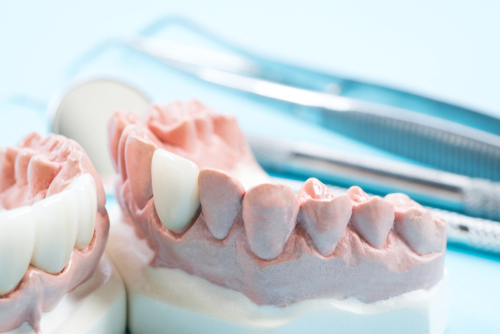Crowns, another name for dental prosthetics, are used to restore or replace teeth that have decayed or been damaged. They are intended to improve the tooth’s appearance while restoring its size, strength, and shape. Crowns are usually cemented into place and are custom-made to fit over the entire tooth, starting from the gum line. Porcelain, ceramics, metal alloys, and combinations of materials can all be used to create them. Every kind of material has benefits of its own and is selected according to the tooth’s location, degree of damage, and aesthetic preferences, among other things.

To restore the structural integrity of a tooth that has suffered significant damage from decay, trauma, or other dental issues is one of the main reasons dental crowns are recommended. A crown offers the required support to stop additional damage and save the tooth when it is weak or has a large cavity that cannot be adequately filled. A crown serves as a barrier to prevent further decay or fracture by covering the entire surface of the tooth.
Furthermore, teeth that are discolored, malformed, or otherwise unattractive can be improved in appearance with dental crowns. Crowns made of porcelain or ceramic material closely resemble the color and translucency of natural teeth, which makes them the perfect material to restore front teeth. These materials can be made to match the color and structure of neighboring teeth, creating a smile that blends seamlessly and looks natural. Metal or porcelain-fused-to-metal crowns might be suggested for teeth that are not very noticeable or that need more strength.
Dental crowns not only provide functional and aesthetic advantages, but they can also enhance oral health in general. A crown restoration aids in preserving the natural alignment and function of the bite of the tooth. This lessens the chance of temporomandibular joint (TMJ) issues and stops nearby teeth from moving out of position. A crown also keeps bacteria from penetrating the tooth’s inner layers and causing infection or inflammation by sealing off the damaged area.
Typically, receiving a dental crown necessitates two dental appointments. The tooth is prepared for the crown during the initial appointment by extracting any decayed or damaged tissue and reshaping it. After that, a dental laboratory receives an impression or digital scan of the tooth, which is used to create a custom crown. To preserve the tooth in the interim, a temporary crown might be inserted. During the second appointment, the permanent crown is cemented into place, guaranteeing a snug and comfortable fit.
All things considered, dental crowns are essential for maintaining and repairing the strength and beauty of teeth. Crowns provide strong, long-lasting solutions for a range of dental issues, whether they are used to improve the appearance of a tooth or strengthen a weak tooth. Patients can regain confidence in their smile and achieve optimal oral health by collaborating closely with a skilled dentist.